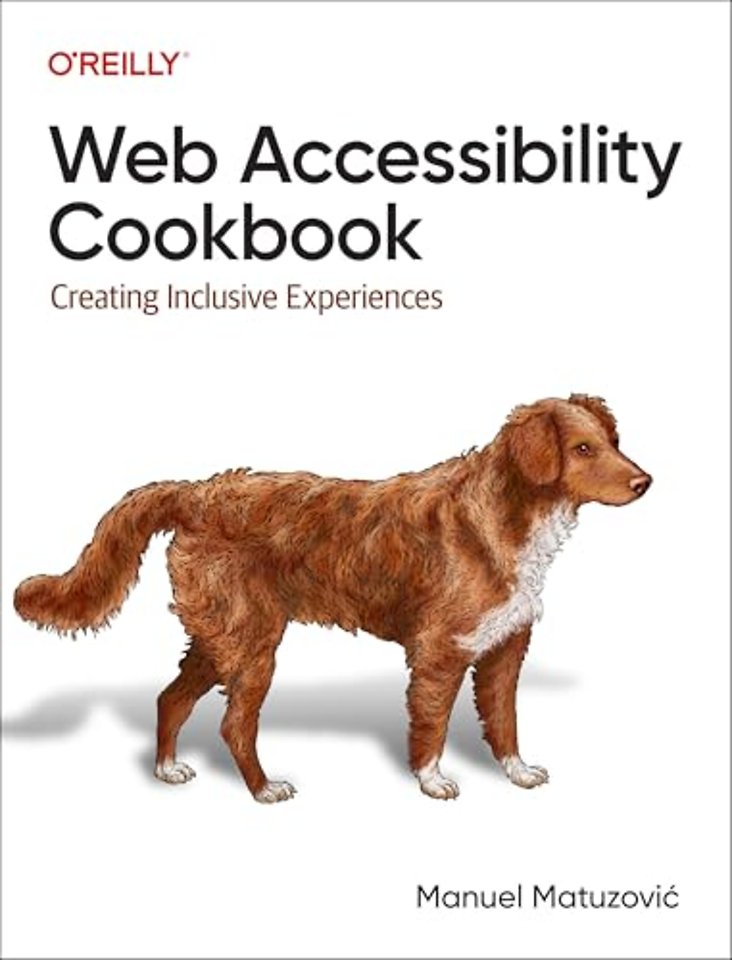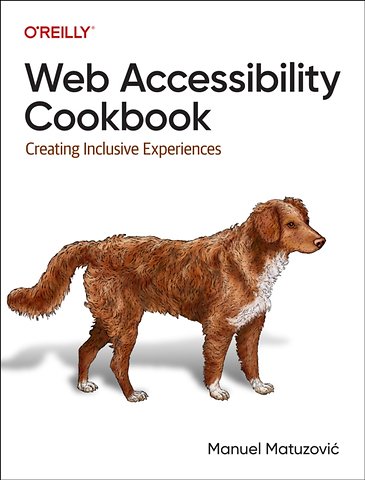Web Accessibility Cookbook
Creating Inclusive Experiences
Paperback Engels 2024 1e druk 9781098145606Samenvatting
Frontend developers have to consider many things: browser compatibility, usability, performance, scalability, SEO, and other best practices. But the most fundamental aspect of creating websites is one that often falls short: accessibility. Accessibility is the cornerstone of any website, and if a website is inaccessible, users won't be able to interact with it, obtain information, sign up for services, or buy products.
The Web Accessibility Cookbook provides you with dozens of recipes to help you avoid these failures. You'll learn how to build common components, such as main navigation, filters, and dialogs, in an accessible manner. Each recipe not only explains how to build things but also why. Author Manuel Matuzovic provides the knowledge you need to create your own accessible components and address your users' varying needs, abilities, and preferences.
With this practical guide, you will:
- Learn how to build websites that feature inclusive frontends
- Discover the common obstacles website users face every day
- Understand how your decisions impact users
- Learn how to build accessible frontends step-by-step
- Write high-quality markup and CSS
- Evaluate the accessibility of frontend components
Specificaties
Lezersrecensies
Inhoudsopgave
Preface
Who This Book Is For
What’s in This Book/Organization
Conventions Used in This Book
Using Code Examples and Supported Software
O’Reilly Online Learning
How to Contact Us
Acknowledgments
1. Structuring Documents
1.1. Define the Natural Language
1.2. Describe the Document
1.3. Set the Viewport Width
1.4. Optimize Rendering Order
1.5. Structure the Document
2. Structuring Pages
2.1. Create Navigation Landmarks
2.2. Create Form Landmarks
2.3. Label Landmarks
2.4. Structure the Main Content
2.5. Create a Sound Document Outline
2.6. Present Content in Order
3. Linking Content
3.1. Pick the Right Element
3.2. Style Links
3.3. Create Download Links
3.4. Create Email Links
3.5. Link Images
3.6. Inform Users of Changing Context
3.7. Fix Client-Side Rendering
3.8. Add Links to Groups of Elements
4. Performing Actions
4.1. Pick the Right Element
4.2. Label Buttons Clearly
4.3. Remove Default Button Styles
4.4. Add States and Properties
4.5. Don’t Disable Buttons
5. Styling Content
5.1. Work with Color
5.2. Respect User Preferences
5.3. Work with Units and Sizes
5.4. Preserve Semantic Information and Operability
5.5. Add Motion and Animation
6. Managing Focus
6.1. Provide Focus Styles
6.2. Make Elements Focusable
6.3. Move Focus
6.4. Keep Focus Contained
6.5. Preserve Order
6.6. Allow Users to Skip Elements
7. Navigating Sites
7.1. Create a Main Navigation
7.2. Highlight the Active Page
7.3. Announce the Number of Items
7.4. Provide Quick Access
7.5. Hide the Navigation on Narrow Viewports
7.6. Add a Slide-in Animation
7.7. Add Submenus
7.8. Avoid Confusion with Menus
8. Toggling Content Visibility
8.1. Hide Content
8.2. Create a Native Disclosure Widget
8.3. Create a Custom Disclosure Widget
8.4. Create Groups of Disclosure Widgets
9. Constructing Forms
9.1. Create Forms
9.2. Identify Form Elements
9.3. Describe Form Fields
9.4. Highlight Erroneous Fields
9.5. Group Fields in a Form
9.6. Split Forms into Steps
10. Filtering Data
10.1. Create a Form
10.2. Filter the Data
10.3. Paginate Results
10.4. Sort and Display Results
10.5. Group Filters
11. Presenting Tabular Data
11.1. Pick the Right Elements
11.2. Structure Tables
11.3. Add Interactive Elements
11.4. Sort Columns
12. Creating Custom Elements
12.1. Working with IDs
12.2. Creating ARIA References
12.3. Focus Elements in Shadow DOM
12.4. Debugging and Testing
12.5. Enforce Best Practices
13. Debugging Barriers
13.1. Find Accessibility Issues Automatically
13.2. Explore the Accessibility Tree
13.3. Debug Roles, Names, Properties, and States
13.4. Visualize Tabbing Order
13.5. Emulate Color Deficiencies, Reduced Motion, and More
13.6. Write Custom Debugging Rules
Index
About the Author
Anderen die dit boek kochten, kochten ook
Rubrieken
- advisering
- algemeen management
- coaching en trainen
- communicatie en media
- economie
- financieel management
- inkoop en logistiek
- internet en social media
- it-management / ict
- juridisch
- leiderschap
- marketing
- mens en maatschappij
- non-profit
- ondernemen
- organisatiekunde
- personal finance
- personeelsmanagement
- persoonlijke effectiviteit
- projectmanagement
- psychologie
- reclame en verkoop
- strategisch management
- verandermanagement
- werk en loopbaan







